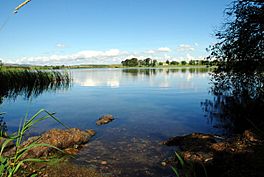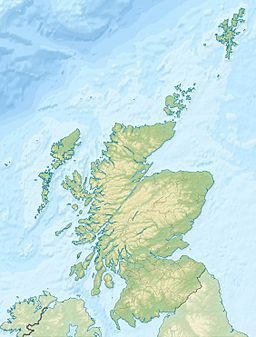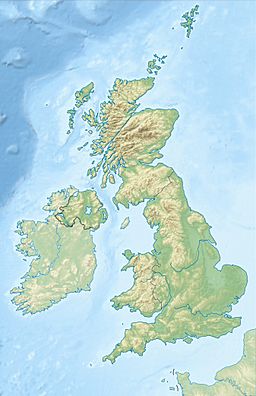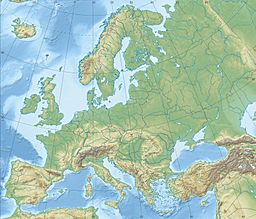Milton Loch facts for kids
Milton Loch is a beautiful freshwater loch (which is the Scottish word for lake) located in Dumfries and Galloway, a region in Scotland. It's a special place not just for its natural beauty, but also for the amazing ancient discoveries found there. Around the loch, archaeologists have found old sites, including three crannogs, which are ancient island homes built in the water!
Quick facts for kids Milton Loch |
|
|---|---|
 |
|
| Location | Dumfries and Galloway, Scotland |
| Coordinates | 55°01′30″N 03°48′54″W / 55.02500°N 3.81500°W |
| Type | Freshwater loch |
| Part of | Urr Basin |
| Primary outflows | Milton Burn |
| Catchment area | 3.7 km2 (1.4 sq mi) |
| Surface area | 0.58 km2 (0.22 sq mi) |
| Average depth | 2 m (6 ft 7 in) |
| Max. depth | 4.6 m (15 ft) |
| Water volume | 1.16 km3 (0.28 cu mi) |
| Shore length1 | 4 km (2.5 mi) |
| Surface elevation | 128 m (420 ft) |
| 1 Shore length is not a well-defined measure. | |
Contents
Where is Milton Loch?
Milton Loch is found in the area of Dumfries and Galloway in Scotland. More specifically, it's in the parish of Urr. The loch is part of the Urr Basin, which is the area of land drained by the River Urr and its streams. Nearby places include the small village of Milton, Crocketford, and the larger town of Dumfries.
Animals and Plants of Milton Loch
Milton Loch and the land around it are great spots for birdwatching. Many different kinds of animals and plants live here, making it a lively natural habitat.
Plant Life Around the Loch
The plants growing in and around Milton Loch are important for the local wildlife. Here are some of the plants you might find:
- Alder trees, which often grow near water
- Bottle Sedge, a grass-like plant
- Canadian Waterweed, which grows underwater
- Common Duckweed, tiny floating plants
- Common Nettle, a plant with stinging hairs
- Common Sallow, a type of willow
- Ivy-leaved Duckweed, another small floating plant
- Lesser Pondweed, an aquatic plant
- Marsh Horsetail, a plant that looks like a miniature pine tree
- Marsh-marigold, with bright yellow flowers
- Meadowsweet, a plant with creamy-white flowers
- Perfoliate Pondweed, an underwater plant
- Purple-loosestrife, with tall purple flower spikes
- Reed Canary-grass, a tall grass
- Chara aspera and Chara globularis, types of stoneworts (algae that look like plants)
- Shoreweed, a small plant found on lake shores
- Water Horsetail, similar to Marsh Horsetail
- Water Mint, a fragrant plant
Animal Life in and Around the Loch
Milton Loch is home to many interesting creatures, especially different kinds of insects and birds. Here are some of the animals that live here:
- Many types of water beetles, like Agabus bipustulatus and Gyrinus marinus (whirligig beetles)
- Birds such as the Common Quail, a small ground-nesting bird
- The Black Redstart, a bird often found in rocky areas
- Different types of ducks, including the Ring-necked Duck, Smew, Greater Scaup, and Lesser Scaup
- The beautiful Whooper Swan, known for its loud call
- The Waxwing, a striking bird with a crest
Important Note About Algae
In 2018, something called "Blue-green algae" was found growing in the loch. These are tiny organisms that can sometimes grow very quickly, forming what are called "blooms." When this happens, local authorities, like the Dumfries and Galloway council, might issue warnings to be careful around the water. This is because some types of blue-green algae can produce substances that might be harmful if touched or swallowed.
Milton Loch's Hidden History
Milton Loch is not just a natural wonder; it's also a place where amazing ancient history has been discovered! Archaeologists have found several old sites here, including special island homes called crannogs. A crannog is an ancient type of artificial island or platform built in lakes, often used as a home or fort.
Discoveries by Peggy Guido
In 1953, the water level of Milton Loch was lowered, which helped archaeologists find two separate crannogs. These were then carefully dug up and studied in 1955 by a famous archaeologist named Peggy Guido.
Milton Loch 1: An Iron Age Island Home
The first crannog, called "Milton Loch 1," was found in the northwest part of the loch. Peggy Guido first thought it was from around 200 AD. However, later tests using radiocarbon dating (a scientific way to find out how old something is) showed it was much older! It was actually from the 5th century BC, which means it was built during the Iron Age.
This crannog was mostly made of wood, including wooden floors. Over time, tiny living things in the loch damaged some of the wood. Today, you can still see the foundations of this crannog, which look like a small stone-covered island. Archaeologists found many interesting items here, such as a fish-club, part of a plough, a bronze clothing fastener, and a mallet-head. Some of these ancient treasures are now kept at the Dumfries Museum.
Milton Loch 2: Another Ancient Site
The second crannog, "Milton Loch 2," was found in the southeast part of the loch. Peggy Guido noticed some wooden timbers sticking out of the water, which led her to this discovery. Later studies in 1989 suggested this site was from the early 2nd century AD. Unfortunately, over the years, more algae and worms in the loch have caused a lot of damage to the old wooden structures.
Green Island Fort
Also in 1953, Peggy Guido explored a site on Green Island, which is a small piece of land sticking out into the loch. This site had been looked at before in 1914. Guido thought it might have been a fort from the Dark Ages or the medieval period. While others initially thought it might be Viking, they later agreed with Guido. However, more recent studies have shown that the design of this site is quite unusual for forts from that time.




